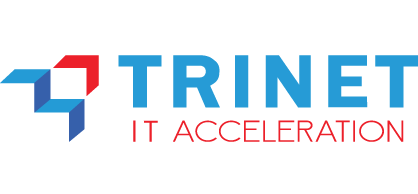Tech Innovation > Security > Data Erasure & Secure Data Sanitization

Data Erasure & Secure Data Sanitization
In the digital era, data is a valuable asset that must be securely managed—not only while in use but also when it is no longer needed. Improper data deletion can lead to sensitive information leaks, regulatory violations, and significant security risks.
📌 Data Erasure & Secure Data Sanitization ensure that outdated or unused data is permanently removed beyond recovery, using methods that comply with global security standards.
No solution Data Erasure & Secure Data Sanitization, organizations face the following challenges:
Unauthorized Data Recovery
Files that are conventionally deleted can still be recovered using data recovery software.
Regulatory Violations & Non-Compliance
Failure to meet compliance standards such as ISO 27001, GDPR, PCI DSS, and PDP Laws can lead to hefty fines.
Insider & Third-Party Attacks
Data that is not securely deleted can be exploited by insiders or external parties.
Data Security on Sold/Recycle Devices
Storage devices such as HDDs, SSDs, servers, and mobile devices can become sources of data leaks if not properly wiped before disposal.

Key Features & Capabilities
Data Erasure & Secure Data Sanitization ensure complete destruction and compliance with regulations.
Show Details
a. Certified Data Erasure
- Permanent Data Deletion: Permanently delete data using tested algorithms that make it unrecoverable.
- Compliance with Standards: Meets security standards such as NIST 800-88, DoD 5220.22-M, ISO 27040, and GDPR.
b. Secure Wiping for All Storage Types
- Data Wiping Across Storage Devices: Supports data deletion on HDDs, SSDs, NVMe, USB drives, servers, tape storage, and mobile devices.
- Method-Based Wiping: Uses different methods based on the storage type to ensure effective data erasure.
c. Automated & Remote Data Erasure
- Remote Data Erasure: Enables remote wiping to manage security across endpoints and cloud storage.
- Scheduled Erasure: Provides scheduled deletion for devices that are no longer in use.
d. Cryptographic Erasure & File Shredding
- Encryption-Based Data Erasure: Uses encryption algorithms to scramble data before deletion, ensuring it cannot be decrypted.
- File Shredding: Ensures granular deletion for specific documents or folders.
e. Detailed Audit Logs & Compliance Reporting
- Audit Logs: Provides automatic reports and forensic logs as evidence of data deletion.
- Regulatory Compliance: Helps organizations meet audit and regulatory compliance requirements.

Business Benefits
Data Erasure & Secure Data Sanitization reduce risks by ensuring secure data disposal and compliance.
Show Details
a. Prevent Data Leaks & Security Risks
- Eliminates the possibility of recovering sensitive data from a device that is no longer in use.
- Ensuring that all company, customer, and employee information remains secure even after the device is no longer used.
b. Ensuring Regulatory Compliance Automatically
- Comply with global safety standards like ISO 27001, NIST 800-88, PCI DSS, GDPR, and UU PDP.
- Prevent fines due to failure to properly delete data in accordance with the data privacy regulatory provisions.
c. Reduce Operational Costs & Increase Efficiency
- Eliminate the cost of storing unused devices which still keep sensitive data.
- Automate data deletion to reduce the workload of IT teams.
d. Supporting Sustainability & E-Waste Management
- Ensuring that devices can be recycled or reused without risking security.
- Supporting green initiatives by reducing e-waste & the organization's carbon footprint.

Use Cases
Data Erasure & Secure Data Sanitization offer secure data disposal and compliance across industries.
Show Details
a. Banking & Finance
- Deleting old financial transaction data from storage to comply with banking regulations.
- Ensuring unused devices do not retain sensitive customer data.
b. Health Services
- Deleting old medical records that are no longer needed in accordance with HIPAA and GDPR standards.
- Preventing patient data leaks when hospitals replace systems or digital medical devices.
c. E-Commerce & Retail
- Deleting customer information from old servers before migrating to new systems.
- Ensuring that credit card data and transactions are not stored on inactive devices.
d. Manufacturing & Supply Chain
- Securing product design and supply chain information before recycling devices.
- Preventing intellectual property theft that could be used by competitors.
e. Government & Critical Infrastructure
- Maintaining the confidentiality of state documents with encrypted data deletion methods.
- Complying with national security policies regarding data erasure in the public sector.

How It Works
How Data Erasure and Secure Data Sanitization Work to Protect Against Data Leaks and Breaches:
Show Details
a. Data Identification & Risk Assessment
- The system identifies data to be erased based on company policies.
- Determines erasure methods based on storage type and applicable regulations.
b. Secure Erasure Process
- Data is deleted using encryption algorithms or multi-pass wiping methods.
- For specific devices, a secure overwrite process is conducted to ensure data cannot be recovered.
c. Verification & Integrity Check
- The system performs post-erasure validation to ensure data is completely gone.
- Generates hash checksums or cryptographic verification as proof of data erasure authenticity.
d. Audit Logs & Compliance Reporting
- All erasure processes are documented in automated reports.
- Data is stored in an auditable format to meet regulatory compliance requirements.
Contact our experts for further information












